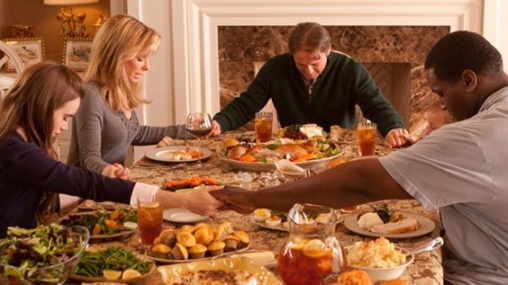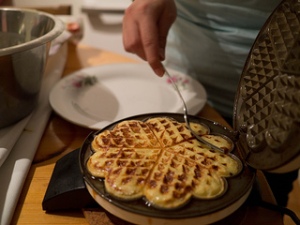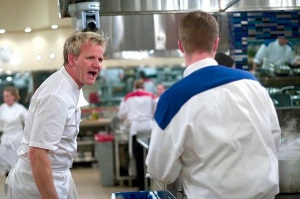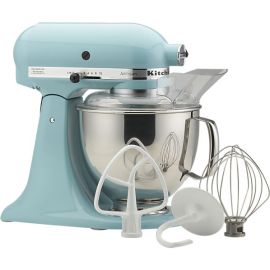Professional chefs, even the best ones, still open a cookbook for special occasions. True, they have mastered the interplay of ingredients and cooked enough meals to be able to improvise in the kitchen when needed. And yes, they are usually the ones writing the cookbooks so that we “novices” don’t end up with a meal that looks like a two year old got into the refrigerator and threw something together with as much thought as a two year old can give to food preparation. But when they are called upon to cook something truly special, a reliable cookbook is crucial.
Professional chef or not, if you’re going to create something worthy of your time and hard work, there are two foundational pieces that you must have at the start of the endeavor: an image of the desired outcome and a step-by-step process of getting there.
Welcome to the world of cookbooks.
Why are there so many cookbooks on the market? How do they all seem to sell so well? The answer to both of these questions is simple: Cookbooks bring about an emotional reaction through the simplest, most universal method of communication-pictures! And not just any pictures, they show images of the most mouth-watering meals imaginable. These images provide an instant emotional response when you happen upon the recipe you just have to make. You could be looking at ingredients that you have never tasted in your life, and yet the presentation of each element in one image fits perfectly into the dish. Cookbooks give you not only something to aim for (as challenging as it may seem), but instant inspiration. Your brain and stomach knows just what you want, but they have to see it first. This is true in the kitchen, and it’s true in almost every aspect of life. You have to see yourself crossing the finish line, acing the test, or buying your dream home, because it’s that image of the end result that lets you visualize being successful and focuses your mind on your ultimate goal.
Interestingly, as important as pictures are for motivation, without the necessary step-by-step process to create what you see in that beautiful image, it’s nearly impossible to make something that looks even remotely like what you see in your cookbook.
After the initial inspiration, the recipe takes center stage.
People talk about setting goals all the time. Goals are dreams, desires, really anything you want to attain or accomplish. The problem is, what most people are really referring to is the picture in the cookbook, not the recipe. “That’s my dream car,” “That’s my dream job,” or “That’s my dream vacation.” This is where the majority of people begin to struggle; they can’t “flip the page” to find the recipe in the cookbook because they are too caught up with the challenge of recreating the picture.
Recipes are your guide! They give you not only every ingredient you need to create that culinary masterpiece, but tell you exactly how to prepare it! How would your professional or personal life be changed if you had a recipe to follow that helped you every step of the way? Think about how much more you could accomplish if every “ingredient” and step for success was written out in detail! The challenge lies in following that recipe for success while adding something that gives you ownership of it. Only then will you combine the motivation of the picture with the preparation of the recipe. If you can break down your goals into their basic elements (list of ingredients) and a preparation guide, you start to live the Mise en Place lifestyle.
Goal-setting is simply the creation of a great, easy-to-follow recipe.
Notice how recipes don’t try to trick you. A recipe follows a strict order of events and preparation. Of course it is important to understand each step in order to put everything in its place, but step 1 comes first for a reason. If there wasn’t an order to follow, the meal may contain the same ingredients, but it’d look much different than the original plan, and it most certainly wouldn’t taste as good.
What I’m trying to do with Mise en Place Leader is help you create your own “cookbook” for life. You create the image of the end-state, and you get to create the process– but I’m here to be your coach and teacher along the way. I’ll provide some tips on making great “recipes” for making you a stronger leader, more successful professional, and better person.
Today’s tip has three parts, and yes, like any recipe, you should do them in order:
1) If you haven’t done so already, go back and read my post, Something Worth Cooking. That’s how begin to practice visualizing success. Get the picture of the result before trying to create the recipe.
2) Make a list of at least 3 ingredients for this amazing “meal.” What is necessary to have in order to put together this visual you have come up with? Are you trying to land that dream job? Awesome! What do you need for application materials? Will you need to move? Have you discussed this with your family?
3) Those 3 (or more) ingredients are extremely important, but after you have the ingredients, remember to consider each step in the process. What’s the first priority? Should you apply to this new job and then talk to your wife? Do you need recommendations before or after the interview? Just as the best chefs don’t use microwaves to create their culinary masterpieces, there are no shortcuts to getting what you’ve always wanted. Procedure is critical, and understanding how to follow it will set you up for greater success.
The Mise en Place Leader prepares before the main event so that the performance takes care of itself.



























